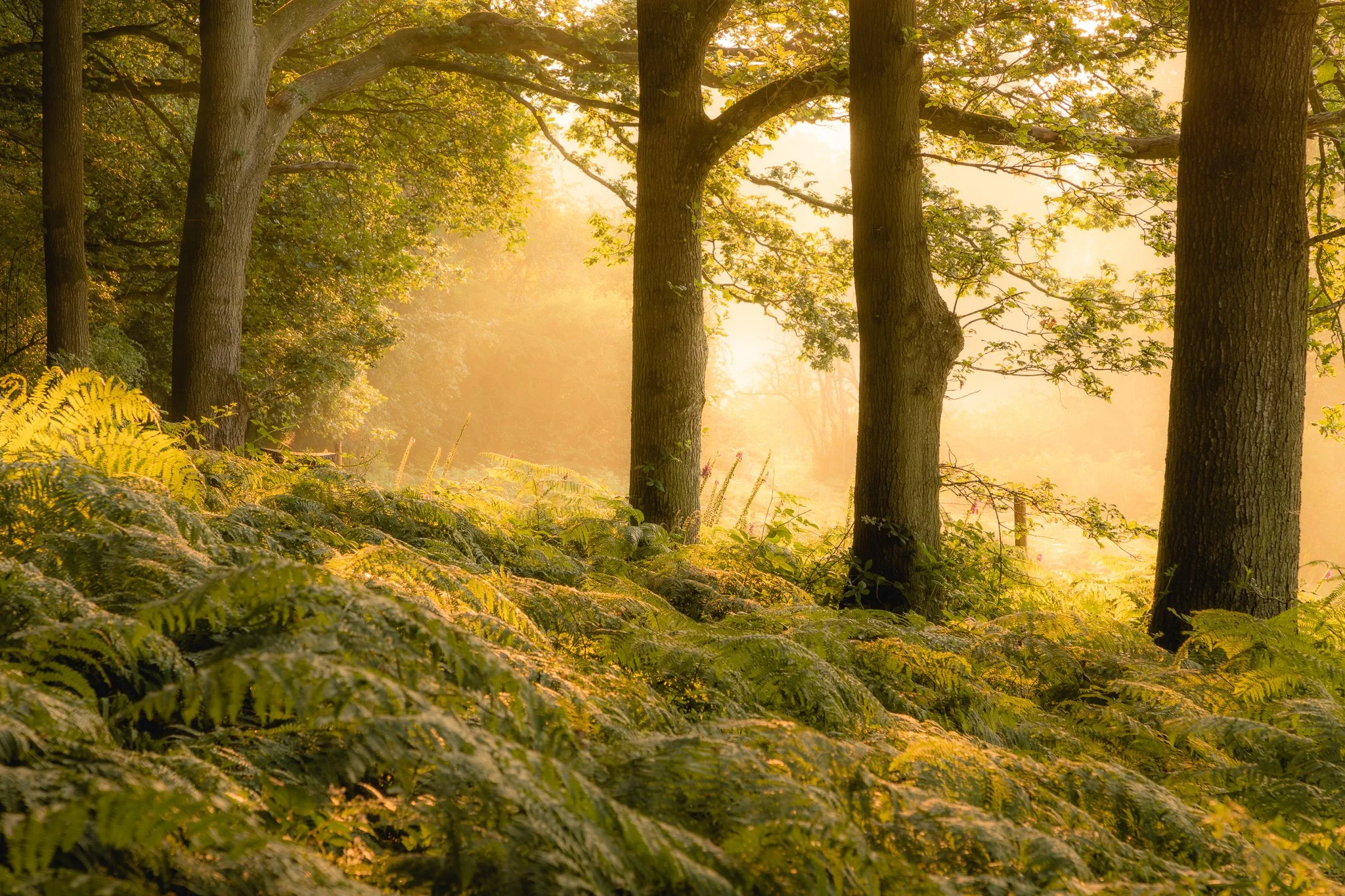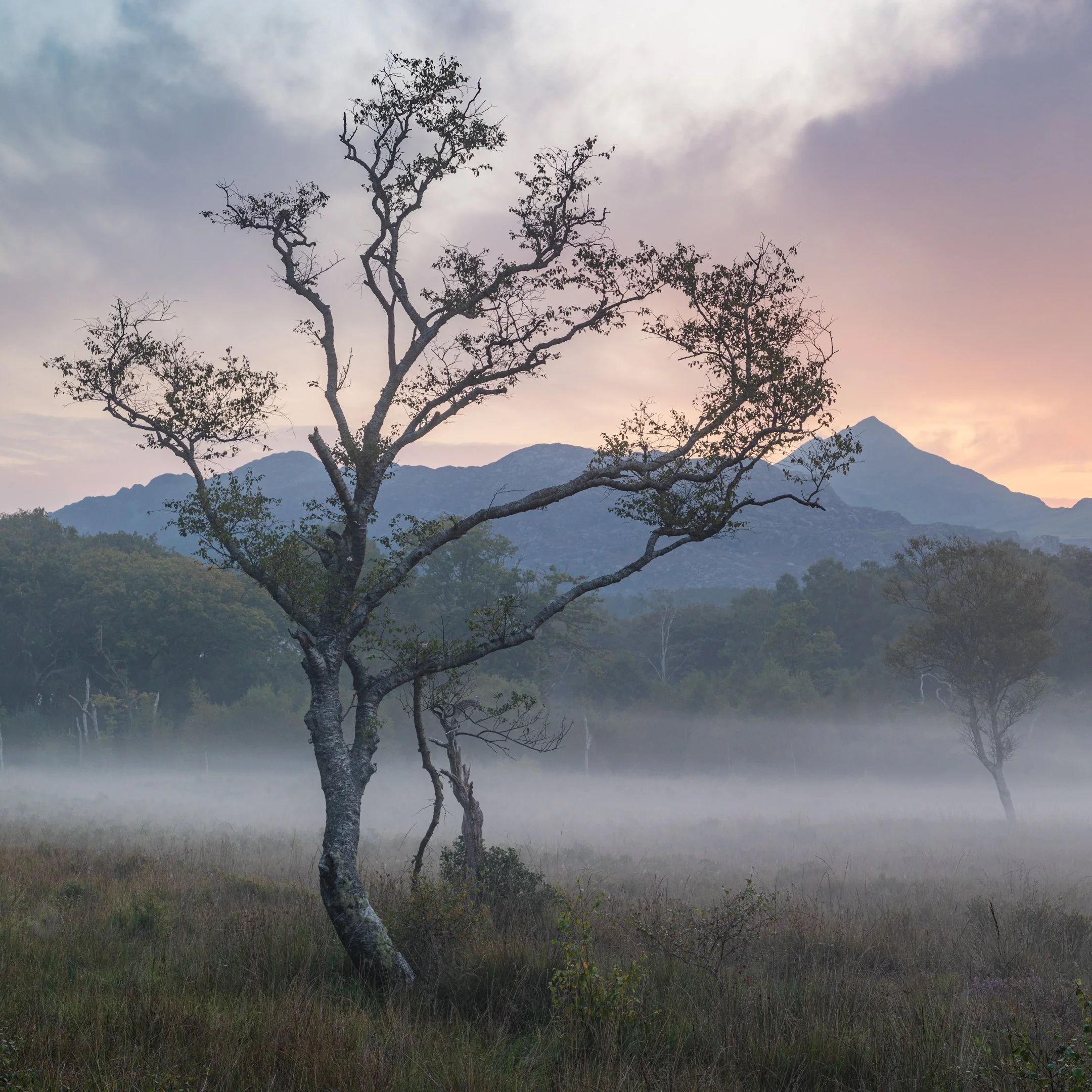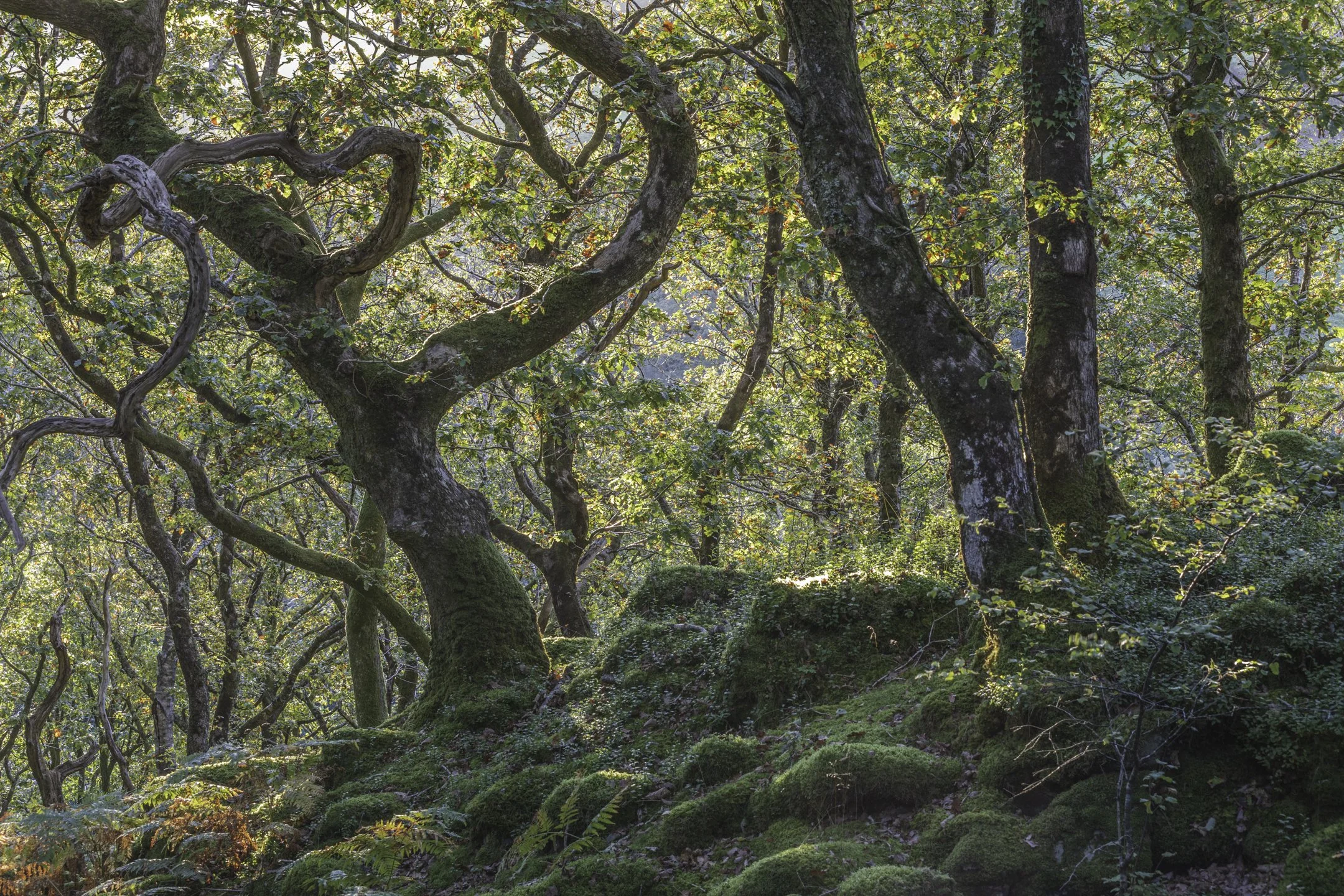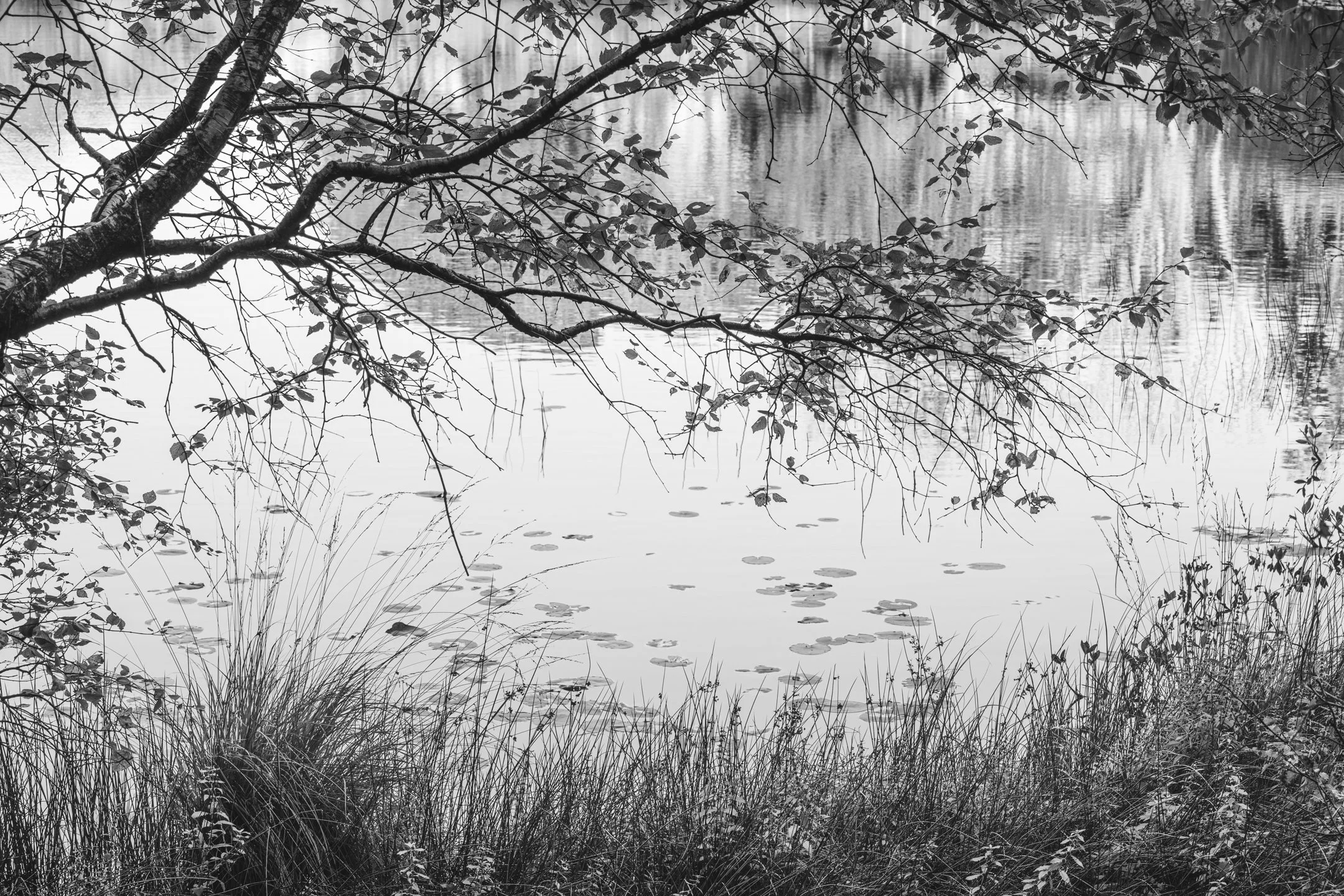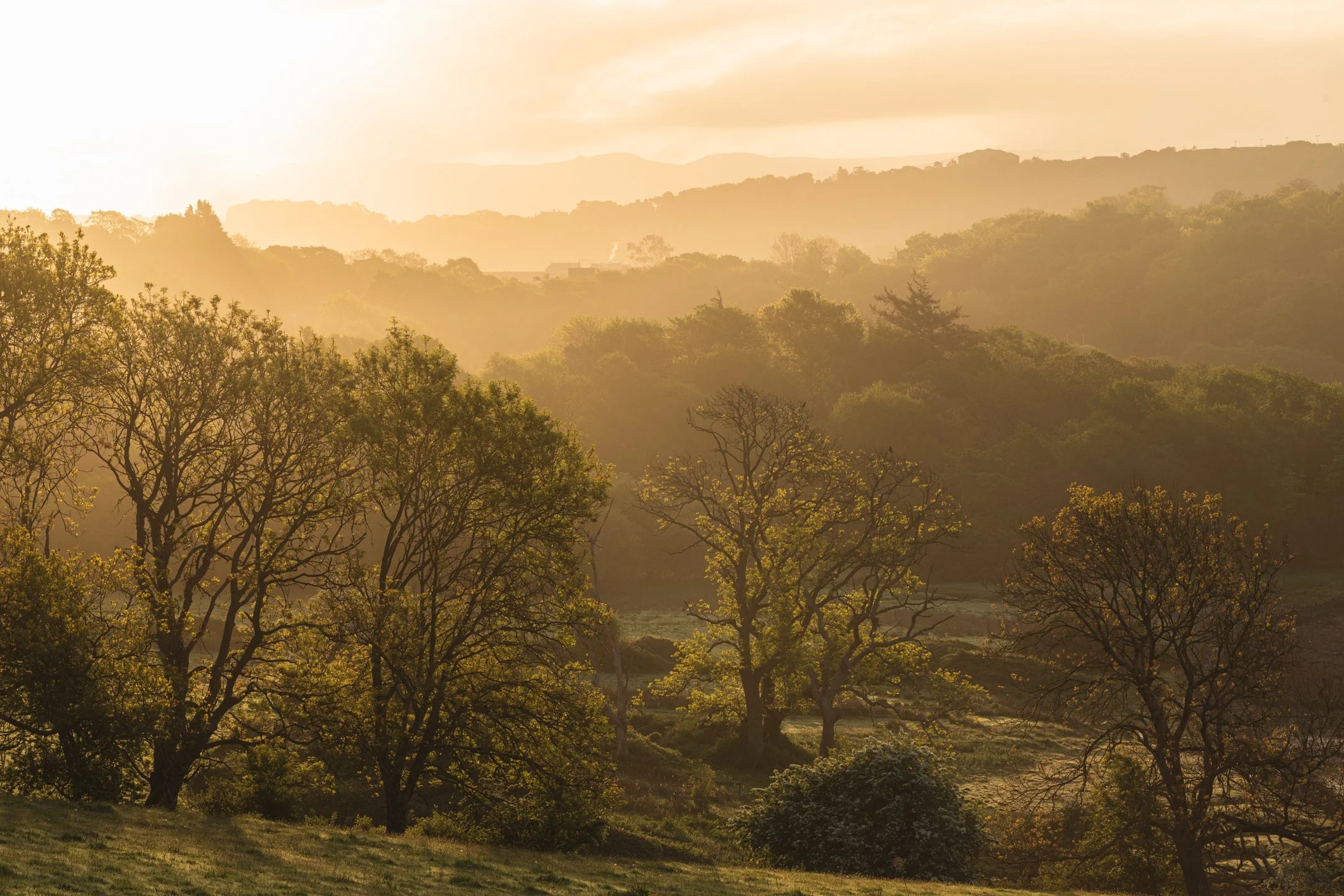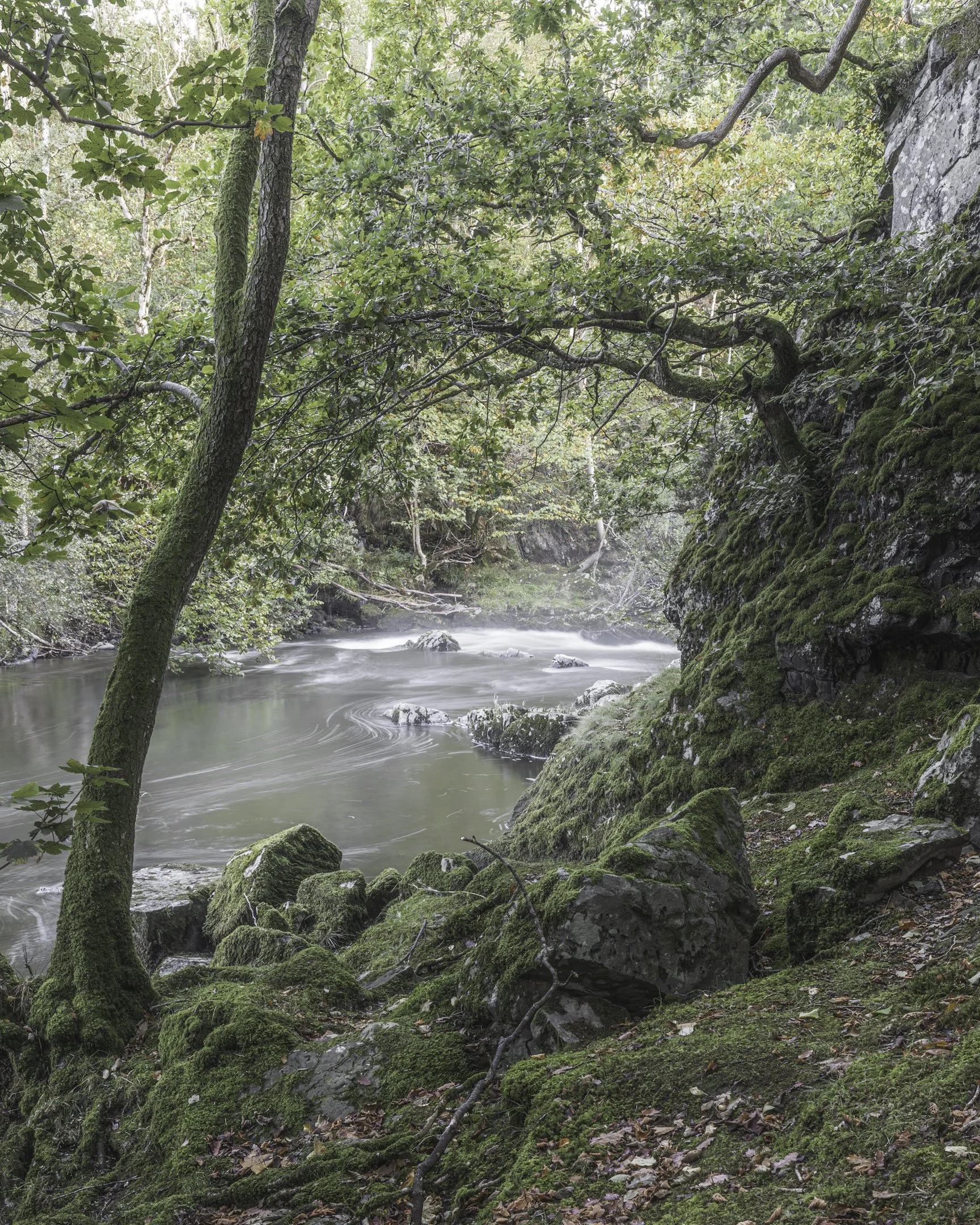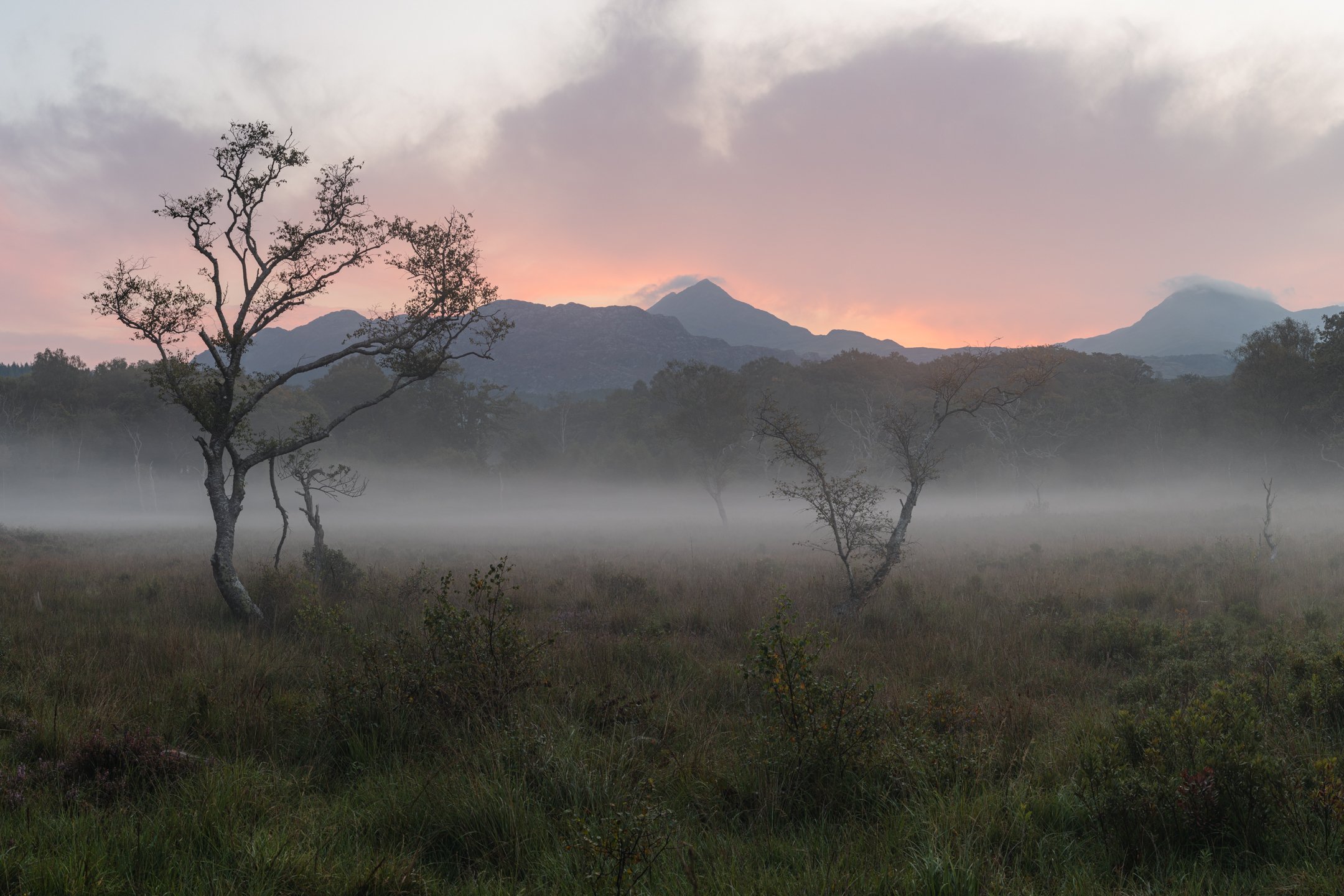Beyond Technique: Five Pillars of Artistic Landscape Photography | A Framework for Creating Photographs with Meaning
We exist in times of deep yearning, not for more technical knowledge and logical understanding about apertures, hyperfocal distances, and ISO settings, but for authentic connection and deeper meaning in the landscape & Nature photographs that we create.
Scroll through any landscape photography platform or forum and you'll find thousands of technically perfect images that will leave you unmoved—beautiful, calculated compositions that fail to stir the soul. Why?
Because an essential ingredient is missing—something that, in an emotionless, machine-dominated world, is needed now more than ever. The photographer's essence; their authentic Truth; a piece of their very soul.
The camera is not merely a device to be used to record time or document a place. It is a bridge that connects two landscapes—the one that you see before your eyes and the one that is within your heart. When you open the shutter, you capture not only what you see in the external world, but you simultaneously reveal something of your internal world—something that is completely unique and often unknown, even to your own eyes at times.
Through years of exploring Wales's ancient woodlands and standing witness to Snowdonia's shifting moods, I've come to understand that meaningful landscape photography rests upon five fundamental pillars. These aren't rules to follow or techniques to master; they are invitations to a deeper way of being—a deeper way of seeing, both the world around you and the landscape within yourself.
In this blog entry, I would like to introduce you to the very pillars upon which I have developed an entire philosophy around in my landscape photography tuition, guiding hundreds of people on transformative journeys into the landscape outside and, simultaneously, into their own hearts and souls.
The First Pillar of Artistic Landscape Photography: Connection
The art of creating a meaningful landscape & Nature photography portfolio begins before you even lift the camera.
The natural world holds infinite beauty, but it reveals itself only to those sensitive souls who approach with respect and reverence. When we photograph Nature with the understanding that we are part of it—not separate observers, but participants in its dance—profound shifts occur. We move from documentation into sacred communion with the spirit of creation.
What happens when you stop seeing the landscape as a subject and start experiencing it as your greatest teacher? When you open your mind and see the pirouetting branches of ancient silver birch trees mirroring a part of yourself back to you? When the still surface of a glacial lake reflects not just mountains but your own internal capacity for stillness?
In practice: Before creating any photograph, I encourage you to sit for ten, maybe twenty minutes. Watch how the ripples on the lake disappear as the water settles into stillness. Pay attention to how the low cloud dissipates into nothingness. Notice how the branches and leaves of the ancient, gnarled oak trees dance with the wind. This isn't wasted time; it is the foundation of everything that follows. This is the work that matters.
I remember stumbling upon a small area of heathland beneath the Moelwynion mountains back in the summer of 2021, where I made friends with a beautifully expressive silver birch tree. I returned one morning, eighteen months later, with the hope of creating a photograph that had been formulating in my mind's eye since that first encounter. A blanket of mist had been drawn over the landscape overnight. It seemed as though the trees were still tucked in and dreaming beneath the sheets. I dared not wake them up prematurely, so I parked up beside the road and walked the half-mile track as lightly as a ballet dancer would on its stage.
This ancient landscape became a stage all of its own, and the main character in this performance was my friend, the silver birch. As it began to awaken, I joined it on the stage to express myself in the ways that I have learnt to over the past few years; with my camera and words. Two characters telling their stories in perfect harmony.
I often see parts of myself inside my photographs, and express from a place deep within. In this case, I saw further parts of myself that perhaps went missing through my younger years; expression wasn't particularly encouraged by my father-figures as I grew up. I look at my friend with a hint of envy and wonder what it might be like to sing or dance freely in front of a crowd, without fear or shame arising, as it does every day in the mountains.
Questions to guide and deepen your creative practice:
What does this place ask of me?
Why was I drawn to this specific location? What stirs within me here?
Can I see parts of myself reflected in this landscape? Am I the stillness of the misty morning or the chaos of the storm sweeping over the rolling hills?
The Second Pillar of Artistic Landscape Photography: Intention
Without intention, we merely collect images as postage stamps from the places we have visited. With it, we make art.
The photographers who create work that sends ripples across boundaries and speaks a universal language are those who photograph about things rather than of things. They apply purpose to every photograph. Every conscious choice—from where to stand, what time to go out, to what to include and what to exclude—becomes an act of meaning-making.
Your photographs are conversations between your inner world and the outer landscape. What are you trying to say? Not to impress others, but to express the Truth about your own experience being here in this moment.
When you understand your deeper intention—the emotional, artistic Truth you're searching for—technical decision-making becomes much simpler. Composition serves the story. Light serves feeling. The photographs become a vessel for something much larger than megapixels and f-stops.
In practice: Before you compose, pause and ask yourself: "What wants to emerge here? What feeling am I responding to? What story needs to be told—of mine, of the landscape's, of the world's?"
It may have taken me over thirty years, but I realise now that I was born to be an artist; to share my inner world of thoughts and feelings with the outer world; to share my lived experiences; and to articulate what it means to be a human being living in this physical world. A photograph can, on one hand, be of something, but it can, more importantly to me, be about something—or someone—too.
All the complex early life events that once caused me so much pain and confusion, I now understand, happened for me to be here, doing this; a thought I often bear when I am opening the shutter of my camera to translate the feelings of my inner world as they reflect in what I see outside of me. Perhaps my increasing desperation to share such parts of my soul comes because of my unconscious decision to keep so much of myself hidden—and, therefore, safe—from the world following years of violence and abuse in my childhood home—abuse that was often directed towards me and my siblings for simply being our innocent selves.
The art of photography is helping me to accept and embrace the other half of me who has always been in tune with his feelings, senses, and intuition. I have made peace with and called back the fragmented parts of my soul. I am more integrated and whole for having embraced the role of the artist and created these maps of my inner landscapes.
Questions to guide and deepen your creative practice:
Beyond capturing beauty or documenting a place, what am I trying to convey?
If this landscape or photograph could speak, what would it say?
What personal artistic Truth am I striving toward?
The Third Pillar of Artistic Landscape Photography: Observation
We think we know how to see. We've been doing it since birth, after all. But there's a profound difference between simply looking and truly seeing.
In our distraction-saturated world, attention has become our most valuable resource. Our minds race ahead, planning the next photograph, worrying about settings, or comparing our work to others. Meanwhile, the landscape's deepest offerings pass by unnoticed.
Observation requires true presence. It asks us to silence the constant internal chatter and attune ourselves to the frequency of the natural world. As your awareness deepens, the landscape begins to reveal what was always there but unseen. Photographs don't need to be forced or fabricated; given enough time, presence, and attention, the landscapes’ beauty reveals itself to your patient and reverential eyes.
Some of the most powerful images I've created were intuitive reactions to moments, and not executions of pre-visualized concepts. They could not have been planned. The outcome could not be controlled. They emerged from a place of openness and receptive observation rather than controlling intention.
In practice: Visit a familiar location but commit to seeing it anew. Study the quality of light at different times. Notice the small details—how frost clings to the leaves, how water envelopes stones. Watch without immediately reaching for the camera. Let the photographs reveal themselves to you. Only create when something stirs your soul.
The theme of stillness is consistent throughout my work and has been present since my earliest creations. It appears my soul has always been drawn to create in the precious moments when the world falls silent and the masses have abandoned the wild landscapes for the safety and comfort found within their homes, leaving me at peace in my solitude.
I was recently asked what it is I am looking for when creating. I paused for a moment upon hearing the man's probing question and then placed my hand upon my heart. The man looked a little perplexed, expecting, perhaps, an answer from my mouth. I proceeded to tell him that it is a feeling that I am looking for initially, before I am drawn to create something. I seek the ephemeral state of presence that a quiet mind and a heart filled with song can bring. My mind often becomes entranced by the entangling branches in the canopy above, the glittering leaves that are backlit by the warm morning's sun, or the ripples that dance gracefully across the mountain lake.
Questions to guide and deepen your creative practice:
What am I not seeing because I'm too busy looking?
Can I approach this familiar place with awe and wonder as if for the first time?
What does this landscape wish to show me?
The Fourth Pillar of Artistic Landscape Photography: Attention
If observation is about opening your senses, attention is about focusing them with purpose.
Advanced composition isn't about following rigid rules; it's about understanding how visual elements work together to guide the viewer's eye and evoke feeling. Every line contained within the frame leads somewhere. Every tonal contrast creates tension or harmony. Light doesn't just illuminate; it sculpts meaning, and the absence of it creates depth.
Where you place your attention determines what you create. The same scene offers infinite possibilities. Do you emphasise the interplay of light and shadow? The delicate textures in the foreground that draw the eye before sending a viewer deeper into the frame? The negative space that allows breathing room for reflection and deeper contemplation?
Attention is also about knowing when to break the conventional ‘‘rules’’. Some of the most compelling photographs emerge when we challenge the status quo and break rules. What happens when darkness fills the foreground and light beckons from beyond? What story does that tell? What about when we turn and rebel against the general consensus that we must photograph with the light over our shoulder, beaming directly onto our subject?
In practice: When you find a composition that calls to you, don't just shoot and move on. Work the scene. Move around a little bit. Challenge whether the first place you stood is the ‘right’ place. Explore different focal lengths, angles, and perspectives. Consider what changes when you include or exclude certain elements. Let your attention become surgical—what is essential? What detracts from your intention?
Within my own portfolio of photographs, there are many themes that have been emerging over the past few years. Two of the key themes are stillness and light. One of my portfolios is called 'Finding Light', and the other, which has been born recently, is 'Seeking Stillness'. These key themes have pointed me towards a deep well of self-understanding as I have striven to understand my purpose and place on the earth.
Many of the photographs within my Finding Light collection include elements of darkness and light, often with darker foregrounds, representing, perhaps, my darker childhood years and my journey towards the light of hope, understanding, acceptance and the resulting purpose that followed when I unearthed my creativity.
These weren't things that I was consciously thinking about when I set out to create photographs, however. This all became progressively clearer to me as I used my analytical mind to reflect and write over the years about the meaning behind my photographs. When I look back even further into my portfolio, I can see that this is an approach that I adopted from the outset. Some of my earliest landscape photographs contain dark foregrounds and light in the background—breaking many of the unwritten ‘‘rules’’ in photography by shooting directly into the sunlight.
Questions to guide your practice:
What is the photograph really about—and does my composition serve the story?
What happens if I challenge conventional approaches to this scene?
Where does my eye naturally travel through or to in this frame, and is that intentional?
Have I chosen the best place to stand? What happens if I move left or right, or heighten or lower my tripod a little?
The Fifth Pillar of Artistic Landscape Photography: Reflection
Photography is not complete at the moment of capture. The deepest learning—and the most meaningful growth—happens in moments of reflection that follow.
When you return from the field, resist the urge to discard them immediately or move on as soon as you have posted them online. Instead, try sitting with your images for a while, or revisiting them over time. Study them not just for technical merit but for what they might reveal about you. What patterns emerge? What themes recur within your portfolio? What emotions surface repeatedly in your body of work?
Your photographs are mirrors. They show you what you're drawn to, what you're searching for, what you're unconsciously expressing—they can reveal who you are and lead you to a place of deeper self-awareness and understanding. By bringing awareness to these patterns, you move from documentation to conscious and intuitive artistry. You begin to understand not just your formulaic vision but your creative voice—the deeper ‘‘why’’ beneath the ‘‘what’’.
This reflective practice extends beyond individual images to your body of work. As you group photographs into collections, stories, themes, and concepts begin to emerge. The narrative threads that weave through your creativity become visible. You start to recognise your unique emotional fingerprint—forged by the fires of your own lived experiences.
In practice: Keep a journal specifically for photographic reflection. After particularly profound outings, write about what you experienced—not just what you photographed but what you felt, what surprised you, and what challenged you. Record any of the wisdom Mother Nature kindly shared with you. Periodically review your work from over the past months. What themes appear? What subjects have been calling to you repeatedly? And why?
I sit and write after spending a wonderful couple of days in my beloved Eryri (Snowdonia) recently with a kindred soul and fellow seeker of light and landscape. I introduced him to a couple of my favourite locations, delivering two intensive days of photography tuition during which I shared insights, techniques, and wisdom from my own creative journey as he embarked upon a journey to discover his own photographic vision. We instantly formed a connection—as my intuition informed me we would, following a couple of online introductory calls we scheduled beforehand—and shared two days that will live on as part of me forever.
Encounters with other creative souls on tuition days are never disappointing, and, as it happens, I always seem to attract the 'right' kinds of people for me—open, honest, full of curiosity, and with many stories of their own to share to satiate my own curious appetite. It turns out that these encounters always seem to evolve into much more than just the photography. Something spiritual emerges when you find yourself wandering in ancient places with another person; conversations run deeper than the everyday ones, and as the days unfold, I really begin to see the soul of another as they find the courage and comfort necessary to express themselves.
I was praised at times throughout the two days for the presence and space I offered, which allowed for the unfolding and emergence of unforeseen expressions and the exploration of unmapped avenues in conversation. Upon reflection, I realise that every conversation and interaction with another needs to be approached with the same patience, respect, and reverence that one approaches the landscape with. After all, the external landscape that we are exploring is a mirror of the internal landscapes that we often fail to acknowledge or are otherwise unaware of.
Questions to guide your practice:
What recurring themes appear in my work, and what might they reveal about me?
How have my photographs changed as I've grown, and what does that growth tell me?
If my photographs could speak to me, what would they say?
Bringing the Pillars Together
These five pillars don't exist in isolation; they dance and intertwine, each informing and strengthening the others. Connection deepens observation. Intention focuses attention. Reflection clarifies the path forward.
Together, they form a foundation for landscape photography that transcends technique and enters the realm of genuine artistic expression. This is photography as meditation; as a spiritual practice; as a powerful tool for self-discovery, healing, and transformation.
When technical proficiency serves authentic creative vision, photography becomes more than documentation; it becomes a language for expressing your unique perspective on the world's beauty, complexity, and wonder. And that journey of discovering your authentic vision often extends far beyond the camera, fostering greater mindfulness, deeper presence & awareness, and enhanced self-understanding that enriches all aspects of life.
The question isn't whether you have the skill to create compelling photographs. The question is: are you willing to do the deeper work of understanding what you're truly trying to say?
Because once you discover that—once you repair the bridge between your inner landscape and the natural world before you—everything changes and profound shifts begin to occur within your art—and, therefore, your life. The photographs you create will no longer be collections of data, recording a time or documenting a place. They will be a conversation between your soul and the eternal soul of Nature.
They will be, finally and completely, expressions of yourself and your raw, authentic, artistic Truth.
If this approach to landscape photography resonates with your own creative journey, I'd welcome the opportunity to explore how personalised landscape photography education could help you deepen your practice. Through one-to-one mentoring, or in-field, practical tuition we can explore these pillars together in the field, discovering what becomes possible when you move beyond logic and technique towards true, authentic, artistic expression.
Book a discovery call to discuss how this philosophy might transform your relationship with landscape photography, the natural world, and, in turn, yourself.

